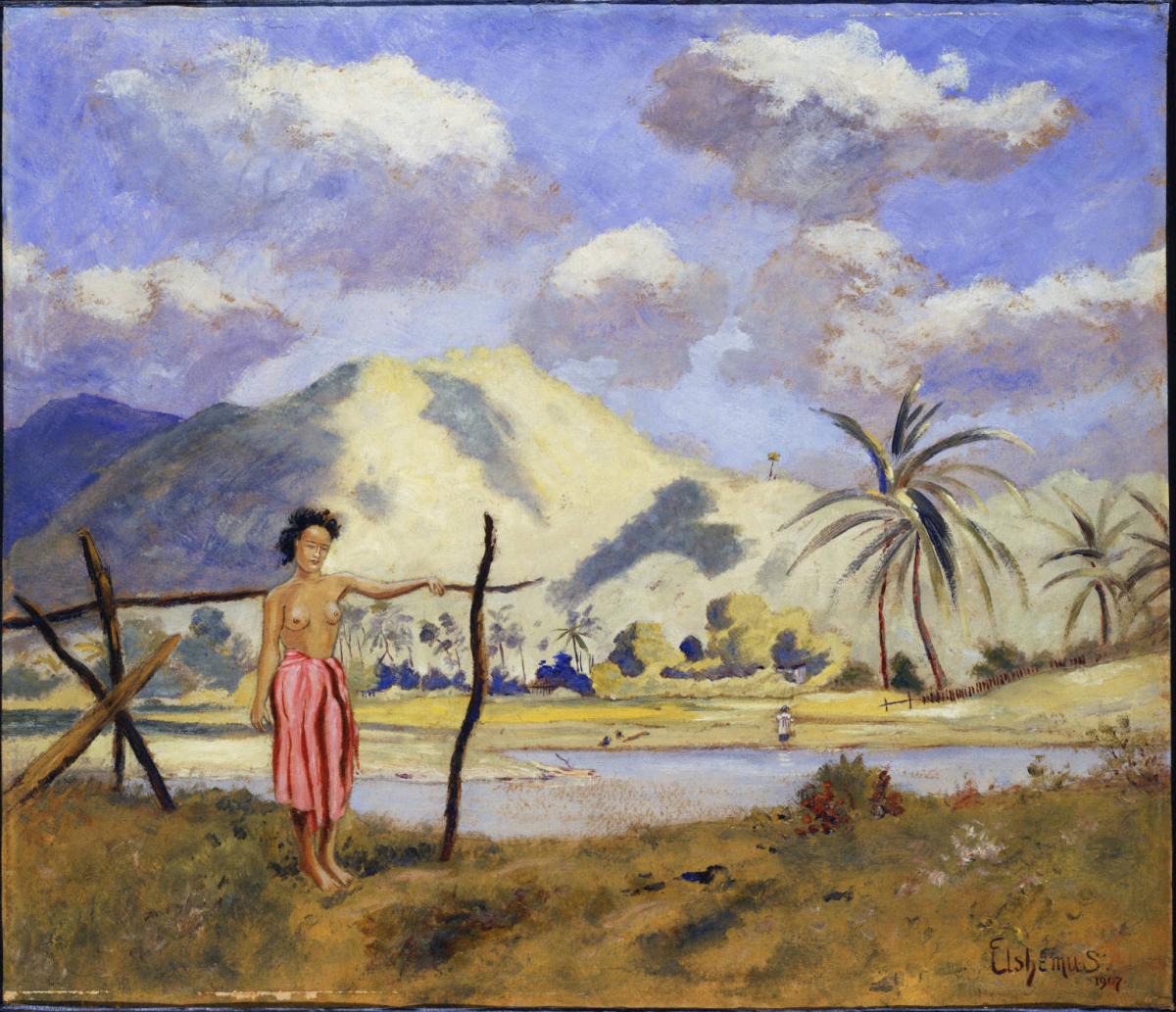Samoa
Louis Michel Eilshemius ( 1907 )

In September 1901, Eilshemius traveled in Apia, Samoa, where he remained for two months. During his stay he produced many pencil and watercolor sketches. However, it was not until five years later that he began to translate his works and memories into oil paintings.
Samoa demonstrates that Eilshemius was as taken with the people of the islands as he was with their exotic surroundings. In this work, he emphasized the woman’s face by placing it between the areas of light and shadow on the mountain in the background. In contrast to the much looser and freer technique used for the landscape, the brushwork on the face is exceptionally fine, revealing both his academic training as well as his attitude toward his subject: Samoa is a romantic, foreign setting, but its people are individuals.
As an art lover and collector, Duncan Phillips was particularly thrilled when he could draw parallels and connections between artists and works across generations and continents. Eilshemius’s work is acutely similar to that of Post-Impressionist artist Paul Gaugain, whose most famous painting are of Tahitian women and culture, and American painter John La Farge, whose work Phillips already owned. In Phillips’s mind, drawing upon the similarities and differences of these paintings enhanced both.
Samoa appealed to Duncan Phillips’s love of a naive immediacy. Phillips expressed a similar sentiment in 1933 when he wrote of a similar painting by Eilshemius that he owned: “Samoan Twilight quietly affirmed its poetry of suggestion and perfect spatial value.” The careful spatial construction he admired is also evident in Samoa. Eilshemius made the visual transition from the woman to the landscape by placing various details in the middle distance such as the log and small figure at water’s edge. He also has her leaning against a dark fence, which stands out against the light areas of mountain and shore. The result is that while her figure is relatively large in scale, it does not dominate the composition but instead complements the landscape.